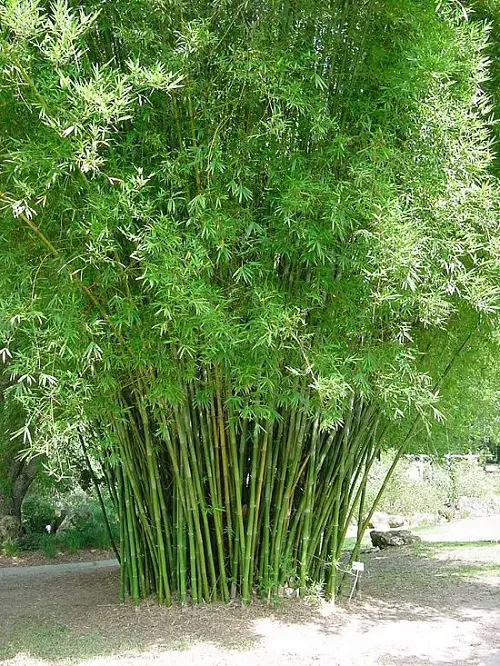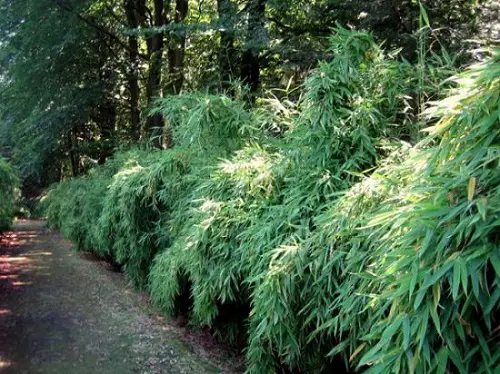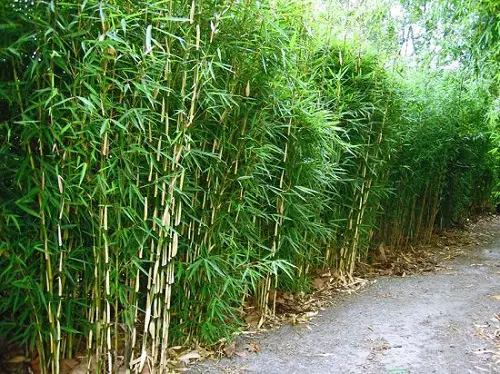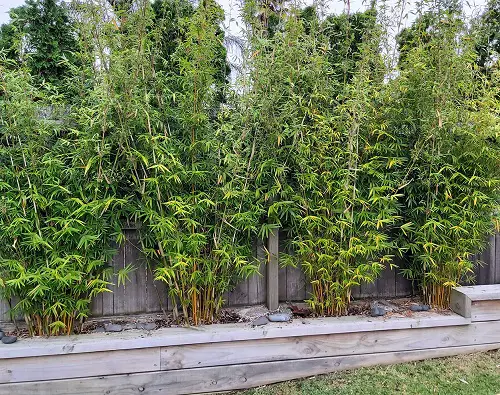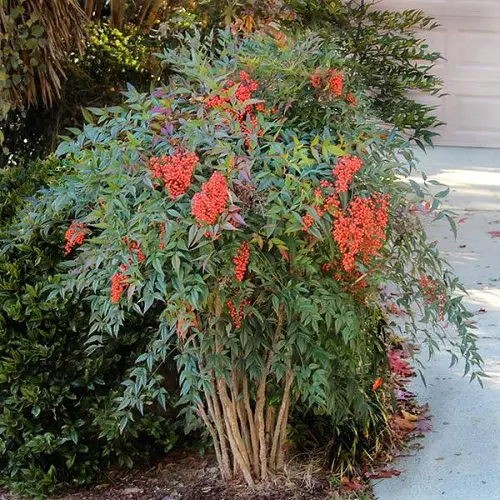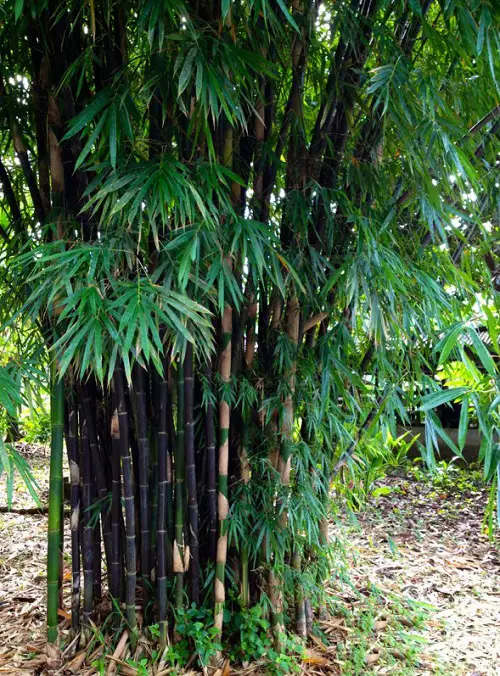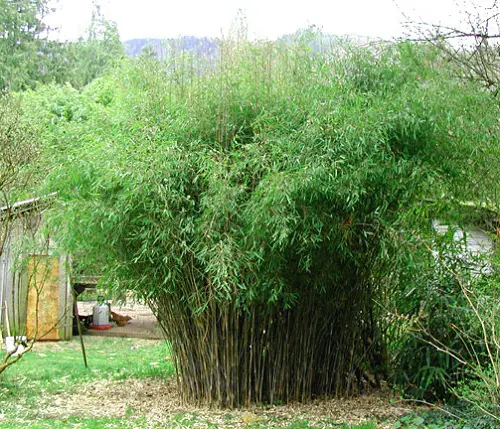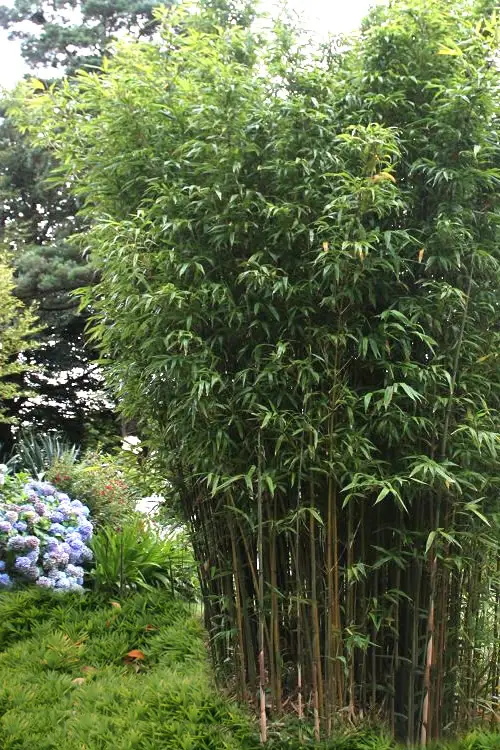Learn about the Best Bamboo for a Hedge and how to maintain it for a beautiful and thriving garden that will attract attention!
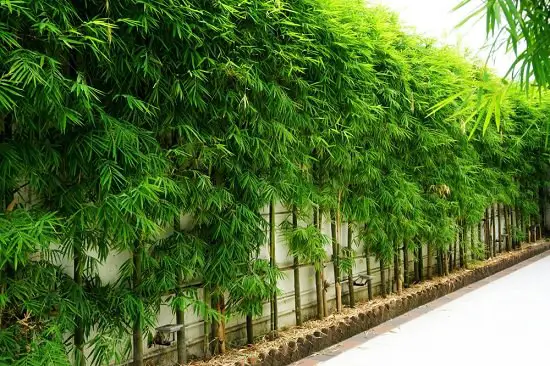
Have a look at the Best Bamboo for a Hedge and how to maintain it! These elegant and beautiful plants can add appeal to any place where they’re planted! Here are the best bamboo hedge plants to choose from.
Best Bamboo Varieties for Hedges
1. Seabreeze Bamboo
Botanical Name: Bambusa malingensis
Seabreeze is a hardy sub-tropical green hedge bamboo and the best choice for coastal areas and can also survive in cool climates and winds. It forms an umbrella shape and grows up to 30-40 feet tall, making a tight hedge rapidly.
2. Multiplex Hedge Bamboo
Botanical Name: Bambusa multiplex
Looking for the best bamboo for privacy hedge? Multiplex Bamboo is a perfect choice for building lush and thick hedges. It grows in a pencil-like cane form and attains a height of 15-20 feet in two years.
This hedge variety doesn’t ask for much attention and survives in droughts quite well.
3. Alphonse Karr Bamboo
Botanical Name: Bambusa multiplex ‘Alphonse Karr’
‘Alphonse Karr’ is the best clumping variety that can be grown as a clumping bamboo privacy hedge. It is easy to maintain and survives in outdoor conditions. As a screening bamboo hedge, it reaches up to 20-35 feet tall.
4. Fountain Bamboo
Botanical Name: Fargesia nitida
Fountain bamboo is an evergreen, non-invasive clumping bamboo that grows up to 10-15 feet tall and 3-5 wide. It is a low-maintenance plant and survives well in partial to full sunlight, giving a beautiful clumping bamboo hedge.
5. Arrow Bamboo

Botanical Name: Pseudosasa japonica
It has very large leaves and creates a good bamboo privacy hedge. This species of bamboo does well in partial shade. However, you have to protect the plant from the wind. As it grows in spreading roots, hence, use a root barrier.
6. Umbrella Bamboo
Botanical Name: Fargesia murielae
Umbrella bamboo features soft, shiny, and cascading foliage. It grows up to 10-15 feet tall and does best when planted in dappled sunlight. As this green hedge bamboo variety does not have running rhizomes, thus no need to control the spreading process.
7. Campbell Bamboo
Botanical Name: Fargesia robusta ‘Campbell’
Need a non invasive bamboo hedge? This species can make for an upright, taller, and narrow screen. Fargesia is best for hedges since it is non-invasive that lengths up to 12 feet. It is hardy and wintergreen and can also tolerate sunlight quite well.
8. Golden Goddess
Botanical Name: Bambusa multiplex ‘Golden Goddess’
A compact and non-invasive variety, Golden Goddess adds a touch of elegance to your garden with its striking golden culms and lush green foliage, creating a beautiful modern bamboo hedge in any landscape.
9. Giant Timber Bamboo

Botanical Name: Bambusa oldhamii
Looking for unique hedge bamboo? If you seek a majestic hedge that commands attention, Giant Timber is your answer. With impressive heights and thick culms, it forms a robust and visually stunning bamboo privacy hedge.
10. Dwarf Buddha Belly Bamboo
Botanical Name: Bambusa ventricosa ‘Kimmei’
Known for its unique swollen culms reminiscent of a Buddha’s belly, this dwarf bamboo cultivar is a delightful addition to any garden, bringing charm and a touch of cultural significance.
11. Heavenly Bamboo
Botanical Name: Nandina domestica
Despite its name, Heavenly Bamboo is not a true one but rather an attractive shrub that makes an excellent heavenly bamboo hedge. Its vibrant foliage in autumn adds an ethereal touch to any landscape.
12. Timor Black Bamboo
Botanical Name: Gigantochloa atroviolacea
For a hedge with a touch of drama, Timor Black is your go-to choice. Its dark purple-black culms create a striking contrast against the green foliage, making a bold statement in any setting.
13. Blue Fountain Bamboo
Botanical Name: Fargesia nitida ‘Blue Fountain’
Perfect for those seeking a more subdued yet graceful hedge bamboo, Blue Fountain boasts slender culms and delicate blue-green leaves, creating a soothing and picturesque privacy screen.
14. Bicolor Bamboo

Botanical Name: Bambusa vulgaris ‘Vittata’
Add a splash of color to the garden with a bambusa green hedge bamboo. Its green and gold striped culms add a vibrant and lively dimension to your landscape, making it a visual delight.
15. Chinese Dwarf Bamboo

Botanical Name: Pleioblastus fortunei
Ideal for smaller spaces, Chinese Dwarf offers a dense and low-growing hedge solution. Its compact nature and fine-textured foliage make it a practical and visually pleasing choice.
16. Graceful Bamboo

Botanical Name: Bambusa textilis gracilis
As the name suggests, this variety brings grace and elegance to your hedge. Its slender culms and soft, feathery leaves create a delicate and graceful bamboo hedge in any garden.
17. Dwarf Whitestripe Bamboo
Botanical Name: Pleioblastus fortunei ‘Whitestripe’
Want a modern bamboo hedge? This charming variety features slender green culms with delicate white stripes, adding a touch of sophistication and subtle beauty to your hedge.
18. Temple Bamboo
Botanical Name: Semiarundinaria fastuosa
With its towering height and broad leaves, Temple Bamboo creates a lush and grand privacy screen, perfect for adding a sense of tranquility and seclusion to your garden.
Want to know about the best fertilizer for bamboo? Click here!
Maintaining a Bamboo Hedge
Planting
The key to establishing a healthy bamboo hedge lies in proper spacing. Allow at least 3-4 feet of room between each plant. Planting can be done at any time of the year, but for optimal results, consider spring and fall as the best seasons.
Watering
Keeping your hedge well-hydrated is crucial. Provide deep and regular watering to ensure the soil remains consistently moist.
Avoid letting the soil go completely dry, as this may hinder the growth and health of your bamboo.
Pruning and Care
Take care of the size and shape of your bamboo hedge through regular trimming. For a clumping bamboo privacy hedge, prune during fall or spring. Identify and cut off any droopy or wilted canes found at the center of the clump.
By pruning from this area, you encourage the growth of fresh, vibrant foliage.
Fertilizing
To maintain the lushness of your hedge, consider fertilizing it twice a year. Use a balanced, slow-release fertilizer in early spring and again in late summer. This practice will provide essential nutrients and promote healthy growth.
Containing a Bamboo Hedge
Containment is a crucial aspect of managing running bamboo hedge varieties to prevent them from becoming invasive and taking over your garden. Running bamboo have a unique growth habit with underground rhizomes that can spread rapidly and create new shoots far from the original plant.
If left unchecked, they can encroach on neighboring plants, invade lawns, and disrupt the overall landscape design.
To safeguard your garden and maintain the controlled growth of running bamboo, installing a rhizome barrier is highly recommended. A rhizome barrier is typically made of durable and impermeable material, such as high-density polyethylene (HDPE) or metal.
When properly installed, this barrier acts as an underground wall, restricting the lateral spread of bamboo rhizomes and preventing them from escaping into unwanted areas.
Note: Remember that containment measures are only necessary for running bamboo varieties. Clumping bamboos naturally grow in dense clumps and do not require barriers as their rhizomes stay close to the main plant.


